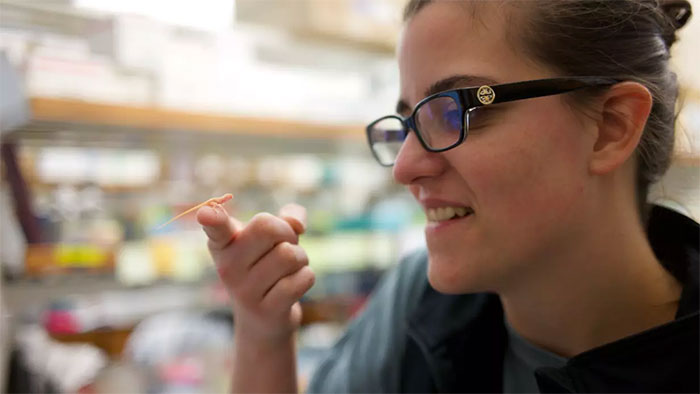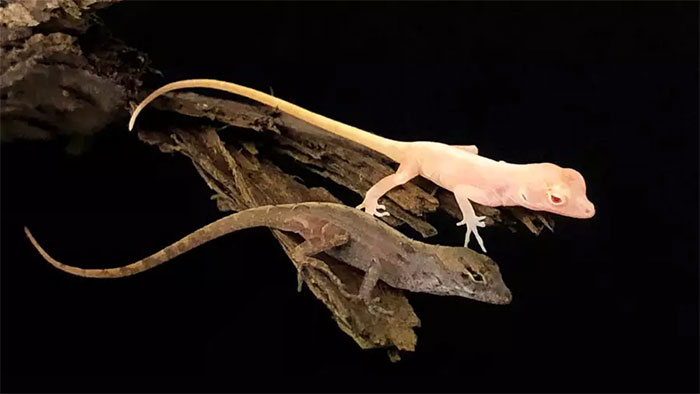US gene editing albino lizard
Gene editing technology has been successfully applied to reptiles for the first time to help us better understand the vision in albino people.
The gene-editing technology CRISPR over the years has made breakthrough strides in mice, plants and even humans, however, making it work on reptiles seems impossible because Major differences in reproduction form. Researchers from the University of Georgia, USA overcame this challenge by creating two genetically modified albino lizards for the first time.

Researcher Ashley Rasys holds the albino lizard on his finger.(Photo: AFP).
CRISPR gene editing is usually done on newly fertilized eggs or unicellular zygotes. Therefore, this technique is difficult to apply to oviparous animals because the male sperm is stored for a long time inside the female fallopian tubes and it is difficult to determine when fertilization takes place. .
Lead researcher Doug Menke and colleagues have found a way to slow down the fertilization process so that the (unfertilized) eggs develop to the necessary stage. They then found that the transparent membrane covering the ovaries allowed to observe which egg would be fertilized next and decided to inject CRISPR reagents into them just before this happened.

Albino lizard compared to normal lizard.(Photo: Science Mag).
The results were unexpected when gene editing technology worked on the DNA of both mother and young lizards. By eliminating the tyrosinase gene , CRISPR technology has helped create two albino lizards. The scientists hope they can be used as models to study how the tyrosinase gene affects retinal growth in albinism patients.
- The world's first human genome
- The unpredictable harm from Chinese scientists' genetic modification experiment
- Research and develop gene editing technology with US soldiers
- Create 'pencil' for genetic errors
- The statement by the Chinese scientist about genetically modified children is disgusting
- For the first time in history, the aging process can be reversed, helping young people never grow old
- The project helps you to edit your own DNA at home
- Albino gorilla is a product of incest
- The first time the CRISPR gene editing process is back
- Editing genes can lose geniuses
- For the first time, three cancer patients in the US were treated with CRISPR gene editing technology
- The study predicted that two girls who had their genes altered would die soon after they were withdrawn, the results unreliable
 Animal 'suffering' after hibernation
Animal 'suffering' after hibernation Why do goats climb well?
Why do goats climb well? Scientists were surprised to see chimpanzees eating turtles
Scientists were surprised to see chimpanzees eating turtles Giant catfish died deadly due to drought in Thailand
Giant catfish died deadly due to drought in Thailand